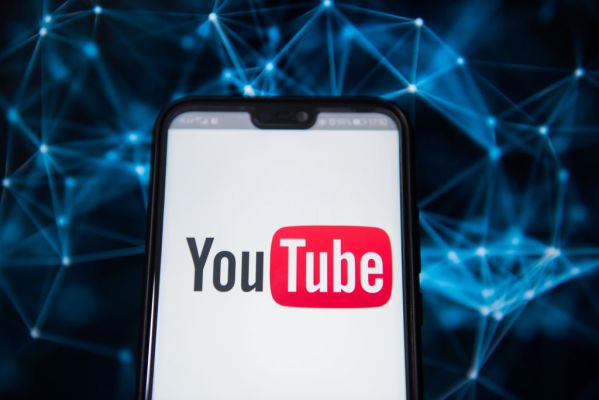In an open letter to YouTube creators today, YouTube CEO Susan Wojcicki admitted that even her kids think Rewind 2018 is “cringey.” Meant as a celebratory recap, the video has garnered a record-setting 15 million dislikes so far.
“We hear you that it didn’t accurately show the year’s key moments, nor did it reflect the YouTube you know. We’ll do better to tell our story in 2019,” Wojcicki wrote.
Wojcicki also mentioned important issues like Article 13, proposed legislation in the European Union nicknamed the “meme ban” for its potentially chilling effect on user-generated content, and monetization. Many creators saw their revenue hurt during “Adpocalypse” last year after YouTube introduced new policies to placate advertisers. Intended to keep ads from running in front of videos with objectionable content, creators said the policies also resulted in the demonetization of many videos without a clear reason.
But the letter is unlikely to address the concerns of creators who are still trying to recover revenue or gain a better understanding of how YouTube’s policies are enforced. For example, Wojcicki repeated the statistic that the number of YouTube creators “earning five or six figures in the last year grew more than 40 percent,” which the platform has said since at least December 2017, when Adpocalypse began. (That month, Bloomberg published a story that said YouTube claimed channels making six figures or more in revenue had increased 40 percent over the last year).
YouTube didn’t provide much more detail than that, and though Wojcicki said that number is proof that creators are “creating the next generation of media companies and we’re thrilled to see how much the YouTube creator economy is thriving,” researchers have found that a very thin sliver of YouTubers ever make it into that revenue bracket.
For example, a professor at Germany’s Offenburg University of Applied Sciences found last year that breaking into the top three percent of most-viewed channels on YouTube might bring in advertising revenue of about $16,800 a year. Those at the very top, or top one percent, often earn revenue through other deals like sponsorships, making it even more difficult to estimate how much of their revenue comes from advertising on YouTube.
Wojcicki also did not address the fact that YouTube has been kicking off many channels that were part of multi-channel networks (MCN), often used by creators who don’t deal directly with YouTube AdSense.
Videos are removed because they may be at risk of violating YouTube’s terms of service, but creators and MCNs have complained about the lack of transparency into how they are enforced.
Wojcicki acknowledged the communication issues and said YouTube had taken steps to improve it. YouTube Studio, to provide more insight into how videos are performing, will be available to all creators this year. YouTube is also now more responsive on social media channels. Wojcicki said it has increased the number of its responses by 50 percent and made response times 50 percent faster.
Wojcicki also noted that monetization “remains a pain point” for many creators. “Just as a reminder, we started last year with many of our largest advertisers paused because of brand safety concerns,” she wrote.
“We worked incredibly hard to build the right systems and tools to make sure advertisers feel confident investing in YouTube, and most are now back,” she continued. “On the creator side, we’ve been improving our classifiers so that we make the right monetization decision for each video,” adding that YouTube has increased the accuracy of its monetization icon system (which gives creators details about why a video has been monetized or not) by 40 percent and made it easier for creators to appeal decisions.
But she conceded that YouTube still has more work to do. Part of that effort includes giving creators other potential revenue streams, like YouTube Music and YouTube Premium, which has expanded to 29 countries from five at the beginning of 2019. It also lowered the subscriber threshold for channel memberships, which allows viewers to purchase memberships, to 30,000 from 100,000.
The “meme ban”
YouTube creators and other people who rely on the platform as a source of revenue in the EU will have an extra set of headaches to deal with next year. Last September, the EU Parliament voted to back Article 13 of the European Union Directive on Copyright in the Digital Market. Nicknamed the “meme ban” because it would mandate sites with large amounts of user-generated content to take down content that infringes on copyright, the legislation’s vague wording has led to concerns about how it would be enforced.
For YouTube in particular, Article 13 means that it would automatically scan and filter user uploads for copyright violations, but it is unclear if its existing Content ID system would be enough for it to comply. Although memes and parodies are protected by laws in many countries, upload filters still aren’t advanced enough to differentiate between copyright violations and memes. Article 13’s opponents worry that this can have a chilling effect. Wojcicki wrote last year that it could potentially shut down the ability of millions of people to upload to YouTube and threaten “thousands of jobs” in the EU. YouTube is campaigning for the legislation to be reworded.
In today’s letter, Wojcicki said videos about the issue have been viewed “hundreds of millions of times,” but added that policymakers “lacked an understanding of the European creator community’s impact and size.”
“I shared with legislators the huge economic benefit you all bring to your home countries,” she said. “In France alone, we have more than 190 channels with more than 1 million subscriptions, with the number of E.U. channels reaching that milestone up 70% year over year.”
